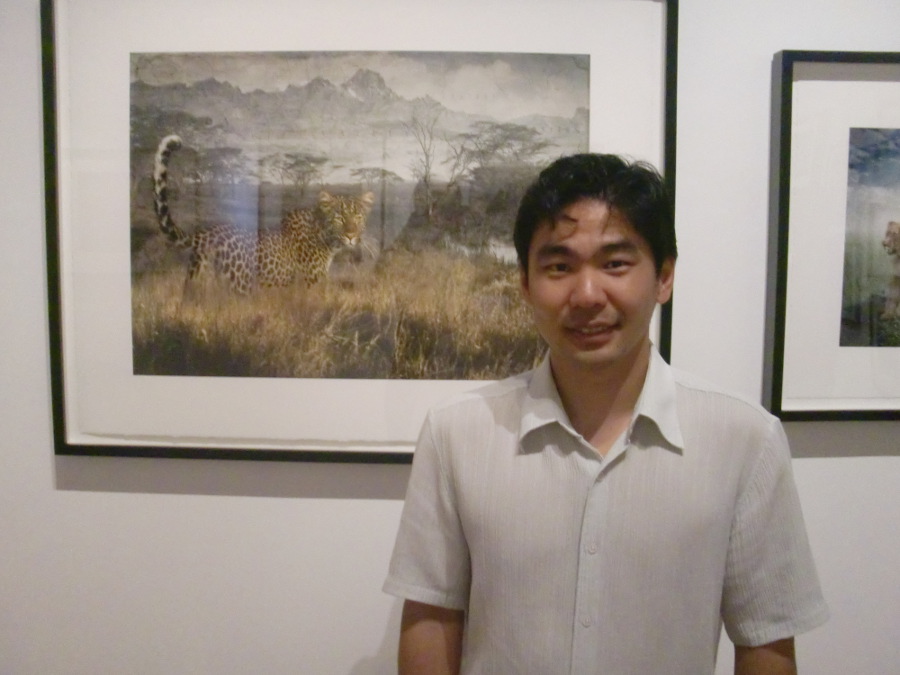May 14, 2012


Hilton Oyamaguchi has tracked crocodiles, snakes, and birds through the rainforest. Oyamaguchi’s fight to preserve biodiversity in his home country of Brazil brought him to America before he could even speak English. He dove into the intensive culture shock of a full-time PhD program, in a language he could not speak, in order to protect the habitat he had grew up with. (Photo by Courtney Hayden)
[nggallery id=204 template=carousel images=8][imagebrowser id=204]
By Courtney Hayden May 14, 2012
Editor’s Note: The following is part of SCGH’s Young Environmentalists series featuring profiles of young people who are doing groundbreaking sustainability work.
LOS ANGELES — Hilton Oyamaguchi moves through the empty art gallery with silent determination. His hands are clasped in front of him as he leans slightly forward, taking in the details of each photograph. Even from a distance, the soft intensity of his gaze is detectable. With his graceful movements and immaculate appearance, Oyamaguchi fits into the G2 Gallery in Venice as well as one of the art pieces.
Minutes before speaking on a prestigious panel of environmental activists and PhD candidates, Oyamaguchi appears unfazed. He does not seem to notice the excited hum of conversation leaking in from the front of the gallery.
Oyamaguchi was born in Brazil, and spent the majority of his childhood adventuring through the rainforests so many North Americans dream of seeing. It may be difficult to imagine, but this poised academic is more accustomed to wading through the Amazon than speaking on Los Angeles panels.
Oyamaguchi earned a bachelor’s degree in the biological sciences, and has now applied to UCLA’s PhD in Ecology and Evolutionary Biology. Oyamaguchi’s fight to preserve biodiversity in his home country brought him to America before he could even speak English. He dove into the intensive culture shock of a full-time PhD program, in a language he could not speak, in order to protect the ecosystem he grew up with.
Oyamaguchi has tracked crocodiles, snakes, and birds through the rainforest, and he recalls driving through the Brazilian wilderness with fondness. “I felt like I was inside a National Geographic documentary” he says, “I knew then, that I had found it.”
Though Oyamaguchi has crossed paths with jaguars and other stunning creatures, he decided to dedicate his educational resources to tree frogs, and to preserving transitional savannah between patches of dense vegetation. His eyes shine with determination as he discusses the lack of scientific resources in Brazil. According to Oyamaguchi, academia has no concept of the full scale of biodiversity in his country because there are not enough researchers to record the species living there.
American and Brazilian approaches to science vary greatly, and Oyamaguchi believes a melding of the two could solve many of the environmental problems facing the globe. The United States has cutting-edge technology and values precise research. Our academic institutions can process the DNA samples Oyamaguchi collects while in the Amazon, so there is no question that American resources are invaluable. Yet, we have something fundamental to learn from Brazilian science: the ability to walk into nature, breathe deeply, and let nature do the teaching. Oyamaguchi’s approach to environmental research consists of taking the time to appreciate nature holistically, gaining perspective from it, and then applying the best research methods.
Oyamaguchi began a new stage of his commitment to the environment when he presented at G2 Gallery’s Young Environmentalists Symposium last Thursday: public outreach. Although he says that he is most comfortable in academia, Oyamaguchi is still dedicated to bringing science to everyone who cares about the environment. Oyamaguchi will wade through the rainforest, work in a lab, or speak to a panel if it will help protect the natural beauty he grew up with.
For related article, see: Young Environmentalists Inspire at G2 Gallery in Los Angeles
© 2012 SCGH, LLC.
]]>